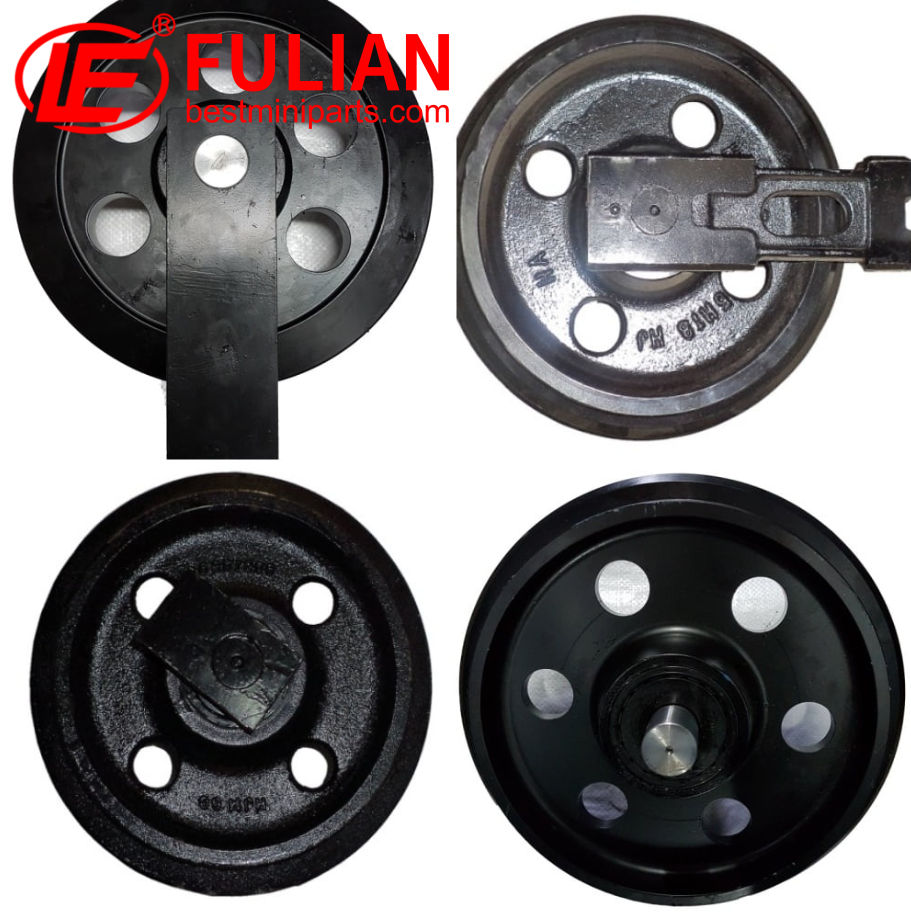Rubber tracks on excavators are critical components that enhance mobility and provide traction. While they are designed for resilience and durability under rough conditions, they can get damaged due to various reasons such as general wear, sharp objects, and excessive loads. Damage to the rubber tracks can cause operational inefficiency and downtime, which is costly in the construction industry. Therefore, understanding the repair options for rubber tracks is vital for excavator operators. Here are some insights into the repair options for rubber tracks:
Assessing the Damage
Before considering repairs, assess the damage to the rubber track:
Before considering repairs, assess the damage to the rubber track:
-
Surface Cuts or Punctures: Small cuts or punctures on the surfaces of rubber tracks might be repairable, especially if they don’t go all the way through the track.
-
Deep Cuts or Tears: More significant damage, such as deep cuts or tears that penetrate through the rubber and into the internal reinforcement, often calls for track replacement.
Professional Inspection
Have a professional inspect the track to determine the extent of the damage and repair viability. This step is crucial as overlooking serious issues can lead to accidents or further damage to the excavator.
Have a professional inspect the track to determine the extent of the damage and repair viability. This step is crucial as overlooking serious issues can lead to accidents or further damage to the excavator.
Repair Options
For minor damages, there are several repair options:
For minor damages, there are several repair options:
-
Vulcanizing: This is a common method for repairing minor damage to rubber tracks. It involves applying a patch and heat to create a bond that restores the track’s integrity.
-
Cold Cure Rubber Repair Kits: These kits can be used on-site and involve cleaning the damaged area, applying a bonding agent, and then a rubber patch to seal cuts or small tears.
-
Sectional Replacement: In cases where damage is more substantial but localized, a professional repair service might offer sectional repair or replacement of the damaged segment of the track.
Limitations of Rubber Track Repairs
While minor repairs are possible, there are limitations:
While minor repairs are possible, there are limitations:
-
Temporary Solution: Repairs are often a temporary solution, as operating conditions may cause the same area to fail again due to stress and wear.
-
Severity and Location: Not all damage can be repaired, especially when located on the track’s edges or in areas that endure the most strain during operation.
-
Integrity: Even after repair, there’s no guarantee that repaired tracks will retain their original strength and durability.
When to Replace Instead of Repair
There are situations when replacement is a better option:
There are situations when replacement is a better option:
-
Significant Wear: If the tracks show widespread wear or multiple areas of damage, it’s probably more cost-effective to replace them.
-
Age and Condition: Consider the age and overall condition of the rubber tracks. Older tracks nearing the end of their service life may not be worth repairing.
Preventative Measures
To minimize the need for repairs:
To minimize the need for repairs:
-
Regular Inspections: Inspect tracks regularly for early detect
ion of potential issues. -
Proper Use: Operate the excavator within the recommended parameters to avoid overloading the tracks.
-
Careful Maneuvering: Avoid sharp objects and rough terrain conditions that could puncture or tear the tracks.
Conclusion
Rubber track repairs for excavators can be a suitable approach for minor damages and can extend the tracks’ service life if done correctly. It is essential to consult with a professional to assess the damage and perform the repair. However, operators should weigh the benefits of repairs against a full replacement, which, in many cases, may be the more reliable and economical option in the long run. Regular inspections and maintenance remain the key to increasing the longevity of rubber tracks and avoiding the need for both repairs and early replacements.
Rubber track repairs for excavators can be a suitable approach for minor damages and can extend the tracks’ service life if done correctly. It is essential to consult with a professional to assess the damage and perform the repair. However, operators should weigh the benefits of repairs against a full replacement, which, in many cases, may be the more reliable and economical option in the long run. Regular inspections and maintenance remain the key to increasing the longevity of rubber tracks and avoiding the need for both repairs and early replacements.
Fulian Operation Team
2024.2.21








